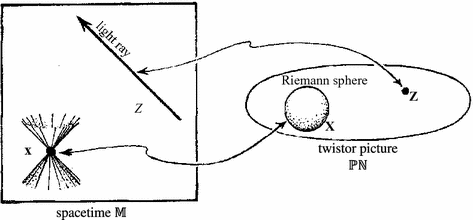Mathematician David Goss wrote to tell me about the latest issue of the journal Current Science, which contains quite a few articles on Einstein’s legacy, including an interesting one on Einstein and the search for unification by physicist David Gross. Perhaps I’m being a bit churlish, but surely I’m not the only person who is at least a bit happy that 2005 is over and done with, so that attention can begin to be paid to some other topic than that of Einstein. He was a true giant, but I bet he’d be pretty tired of the hoopla by now.
Gross discusses Einstein’s goal of finding simple universal laws from which all physics can be deduced, and tells about how this inspired him at the age of thirteen to decide to become a theoretical physicist. He tells about Einstein’s failed attempts to find particle-like solutions to the non-linear equations of GR, unified in various ways with electromagnetism, and notes that in the early 80s, with Malcolm Perry, he found magnetic monopole solutions that were a bit like what Einstein was looking for.
Getting to topics of current interest, Gross talks about “The discovery of supersymmetry, which we all hope and some expect in a few years from now at the Large Hadron Collider…” I don’t think I’m the only one hoping not for this, but for something more interesting. I’d also be curious whether Gross puts himself among those who “expect” to see this at the LHC. There’s the usual string theory propaganda, including the incorrect claim that string theory provides “a consistent and finite quantum theory of gravity” (no, the sum of the perturbation series is not finite, and Gross is one who often says we don’t know what the theory even is). Gross also as usual stresses that he thinks we need to give up on space and time, but doesn’t know what will replace them. He concludes that Einstein was wrong to refuse to accept quantum mechanics and to ignore nuclear and particle physics, but that he was right to try and unify gravity with the other forces, saying “this we know today is the central issue in fundamental physics”, something I don’t really agree with (I’d go for understanding electroweak symmetry breaking).
This issue of the journal also contains interesting articles by Michael Atiyah on Einstein and Geometry, and by Abhay Ashtekar on The winding road to quantum gravity. There’s also a completely uncritical piece of string theory propaganda by Ashoke Sen entitled String theory and Einstein’s dream that could easily have been written ten years ago.
For more uncritical promotional material on string theory, here are two things from UC Davis. They have something there called the “High Energy Frontier Theory Initiative (HEFTI)”, and on their website you can read a report written by an external committee for the Dean at Davis promoting the idea of hiring more string/brane theorists of the phenomenological sort. The report is a few years old, but shows exactly what the consensus thinking of just about the entire high energy theory community has been for the past few years about what is the hot area to hire in. They promote the idea that particle theory is doing extremely well, so much so that
The last period of comparable experimental and theoretical ferment occurred in the early 1970s, swiftly culminating in the development of the Standard Model of particle physics.
and that the “pace of new developments is accelerating” in both theory and experiment.
Also from UC Davis is a new paper entitled Space and time from translation symmetry by Albert Schwarz. It starts off by claiming “In some sense string theory today is in very good shape”, but seems to be empty of content.
Finally, there’s a new paper out tonight reviewing the status of the string theory Landscape. It looks like landscapeologists are now ready to abandon even the idea that the number of phenomenologically viable vacua is finite, and the last part of the paper contains some impressive contortions about why this isn’t necessarily a bad thing. They also seem to have given up on Douglas’s idea of making predictions by counting vacua. They’re still counting the vacua, but now the reason given is not to make predictions, but to see if there are enough to be sure that one of them will reproduce the standard model.


